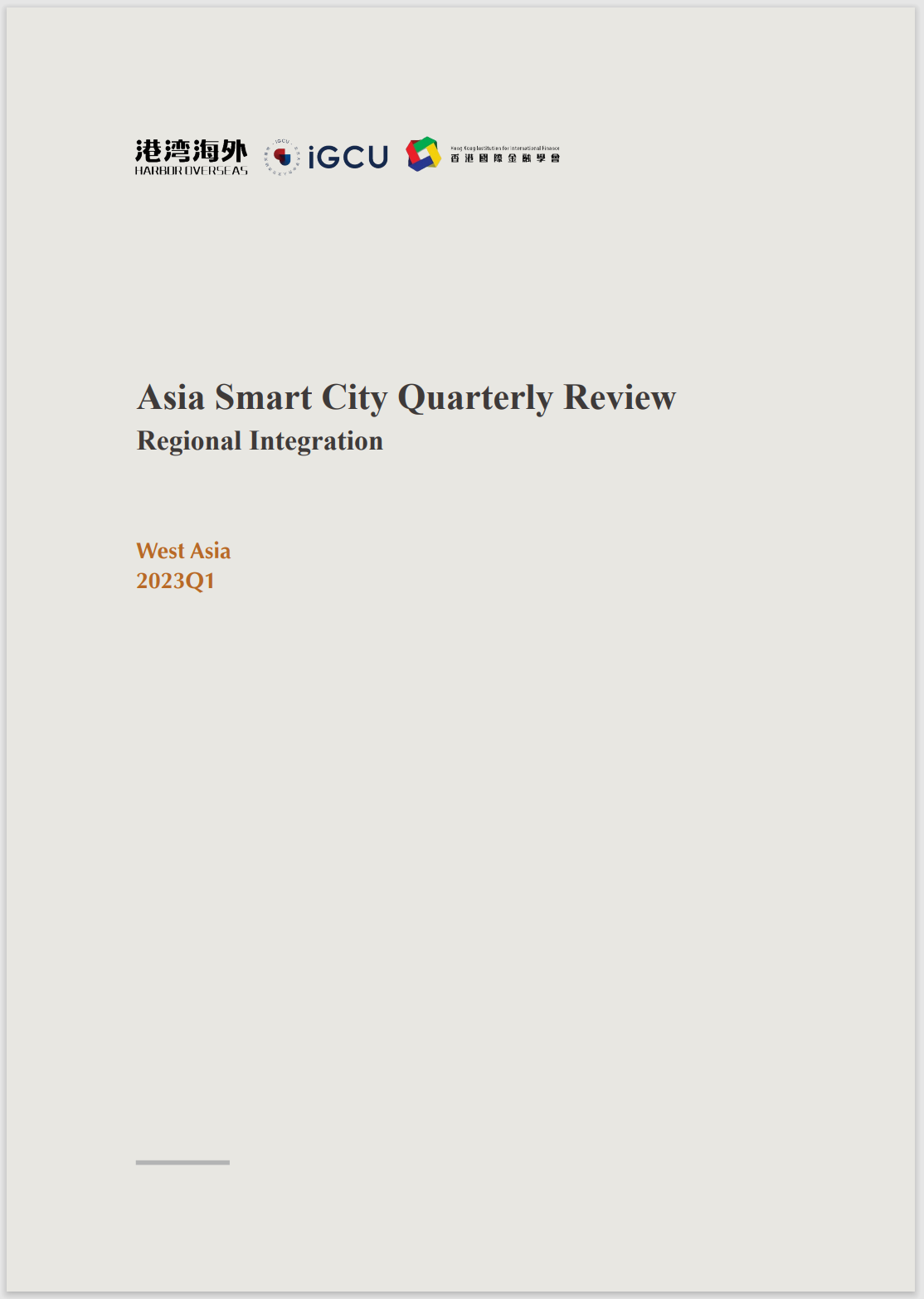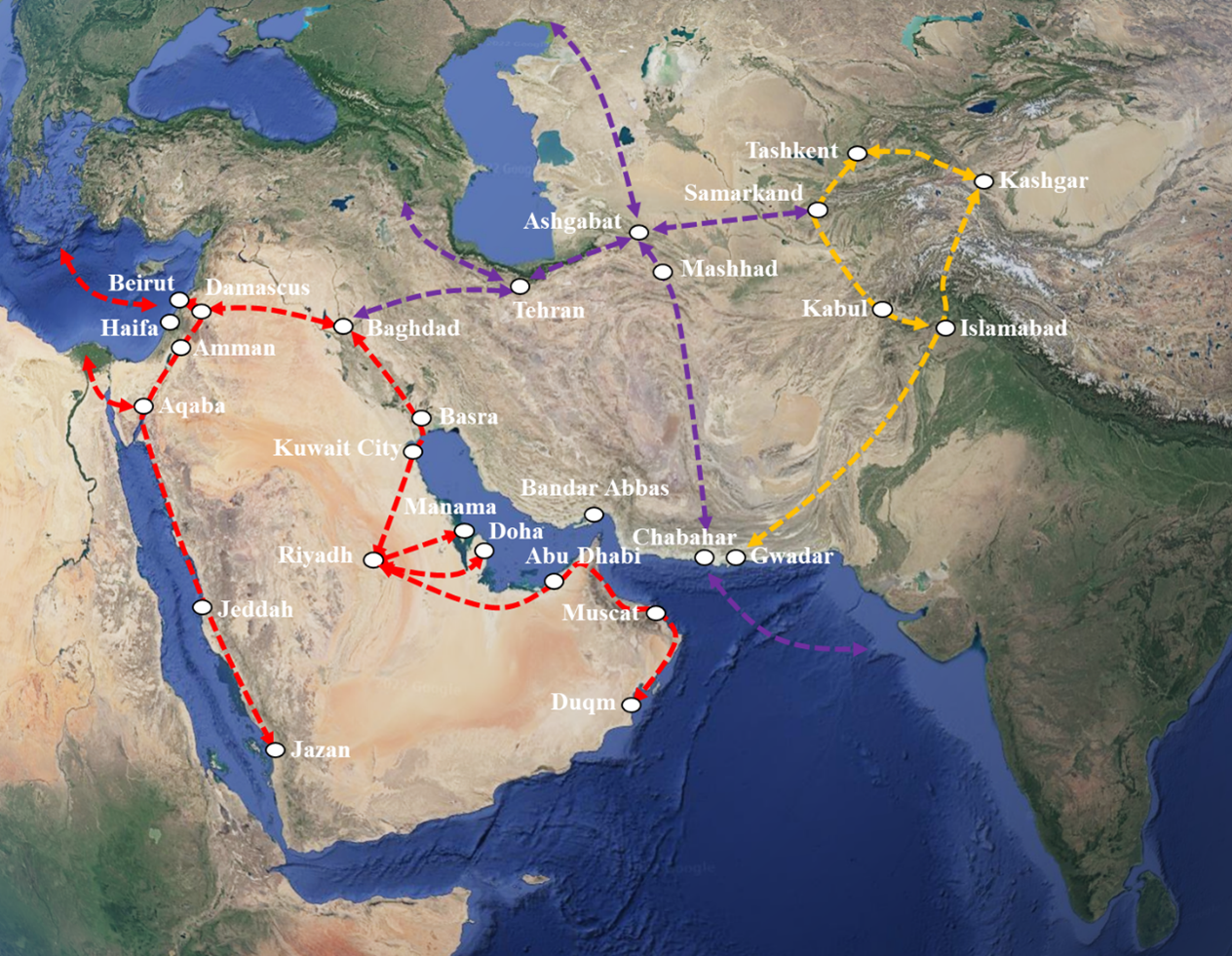Editor’s Comment
On March 10, 2023, the People’s Republic of China, the Kingdom of Saudi Arabia, and the Islamic Republic of Iran released a Joint Trilateral Statement in Beijing, announcing that the Kingdom of Saudi Arabia and the Islamic Republic of Iran had reached an agreement to resume diplomatic relations between them. This China-led peace agreement was called "a major victory for China's diplomacy" by international public opinion. This major breakthrough regarding the situation in the Middle East has opened up a new path for regional peace and stability. It also sets an example for resolving conflicts and differences between countries through the means of dialogue and negotiation.
However, we must recognize the fragility of the current situation in the Middle East, and the realization of lasting peace and stability in this region still requires enormous efforts from the international community. Therefore, we assume that China needs to play a leading role in the future and provide systematic planning to promote the integration of multi-infrastructures, strengthen the connectivity of different countries in the region, implement the “Belt and Road” Initiative, the “Global Development Initiative” and the “Global Security Initiative” with specific action roadmaps, promote the shift of regional focus from geo-politics to geo-economics, and collaborate with the countries to promote lasting peace in the Middle East.
Therefore, we republish the previous Asia Smart City Quarterly Review.

Although think tanks and business organizations around the world have studied “regional integration and development” in large volumes, a global vision and a detailed action guide for decision makers are still missing. Therefore, Harbor Overseas (http://en.harbor-overseas.com/), the Institute for Global Cooperation and Understanding (iGCU) at Peking University (http://en.igcu.pku.edu.cn/), and Hong Kong Institution for International Finance (HKIIF, https://www.hkiif.org/a-list/29465-chs) jointly initiated this cooperation to release the Asia Smart City quarterly review leveraging their vision, expertise, and experience. This pioneering work will remind us (and global elites and decision makers in various fields) of our responsibility to lead global and regional integration and development and establish global benchmarks. We will identify challenges in the target regions in terms of international relations, global governance, and industrial development. We will also offer approaches of building smart cities aimed at regional integration along with financing suggestions. We are currently focused on Asia, but will move on to other regions in due time.
It is a challenging mission to push West Asia, a region of wildly different cultural, religious, political and security interests, toward cooperation. So far, the region’s cooperation with main economies in the world focuses on energy, aviation and space, security, and public facilities, with some IT cooperation in vertical domains, but little has been done to promote the integration of the region itself. It is expected that Asian economies such as China, Japan, ROK and ASEAN, along with the US or Europe, will contribute to that process (regional integration) as a stable and prosperous West Asia suits the interests of the whole world. This paper suggests setting two systemic goals surrounding Riyadh and Teheran.

Figure 1 West Asia (Discussed by all parties; map by Chen Xi)
The Riyadh sphere:
(I) The Beirut/Tripoli/Haifa-Damascus-Amman-Aqaba-Jeddah-Jazan route;
(II) The Riyadh-Kuwait City-Basra-Baghdad-Damascus-Beirut route;
(III) The Riyadh-Manama/Doha/Abu Dhabi-Muscat-Duqm route.
The Teheran sphere:
(I) The Baghdad-Teheran-Ashgabat-Central Asia route;
(II) The Central Asia/Ashgabat-Mashhad-Chabahar route.
These two systemic goals are set for the following considerations: (I) Riyadh and Teheran are the pivots of interests; (II) Amman, Baghdad and Muscat/Duqm are the key nodes for regional integration. As we plan to discuss Central Asia in the future, we won’t go into details about nodes in that region such as Ashgabat and Tashkent this time; and (III) We will specify the role of Gwadar and Chabahar.
This section is drafted by Dr. Chen Xi (Harbor Overseas) and project coordinator Dr. Gao Dan (iGCU) and reviewed by Professor Wang Dong (iGCU), Dr. Chen Xi (Harbor Overseas) and Professor Xiao Geng (HKIIF). Special acknowledge is extended to Professor Wu Bingbing at the Arabic Department of the School of Foreign Languages in Peking University, whose contributions to identifying the questions are highly appreciated.
Around the two systemic goals, we propose to develop rail transit first, followed by smart cities. The idea is to build a path of regional integration with Riyadh and Teheran as two pivots by developing traditional, digital and institutional infrastructure in parallel.
Rail transit first. First of all, technical standards are not a problem. Like Europe and China, countries in the Middle East adopt the standard gauge (1,435mm). If trains have to go from there to Russia or Central or Southern Asia, where the wide gauge (1,520mm) is adopted, they just need to exchange cargoes or change wheels at the transshipment station. Second, fully utilizing the existing railways and building new traditional or high-speed railways to develop a high-quality rail transit system is the best way to enable the free flow of people and materials across West Asia.
Smart city. It is essential to develop smart cities in regional nodes to boost industrial development, create enough jobs, and hedge other risks, but smart cities have to be built at different paces due to the imbalanced regional economy. For instance, building the wired or wireless network is Baghdad’s top priority, while advanced traffic hubs and smart communities are advised in Amman, Muscat/Duqm or the NEOM new city in northwest Saudi Arabia. These remote interaction systems and VR or AR technologies available to the public will enable people-to-people exchanges, cultural explorations, telecommuting or online entertainment among Amman or Muscat, Riyadh and other cities along the Red Sea and the Persian Gulf. This will not only promote the technological progress in the US, Japan, ROK, China and Europe, such as transparent AR glasses, wide viewing angle naked-eye 3D or edge computing, but will also strongly bolster local IT services.
If they want to gain greater economic momentum and make their people more creative, both Riyadh and Teheran must take the initiative to consider establishing a digital governance system compatible with technological development. This includes, for instance, developing the management and control system involving planning, construction and operation, guiding the healthy development of digital juggernauts, and coordinating regional emergency systems. They also need to boost the market of digital factors, apply high-standard international rules and technological ethics, and improve people’s digital literacy.
About Beirut, Tripoli, Damascus and Haifa. Whichever of them steps up and assumes the role as the starting point of “Mediterranean-West Asia-Central Asia-East Asia” trade will stand to enjoy enormous economic benefits. Although Beirut, Damascus and Baghdad don’t have favorable economic or security conditions at the moment, we believe Riyadh and Teheran have the wisdom to do something driven by common interests.
About the role of Chabahar and Gwadar. Chabahar is a better option to access the Indian Ocean for Iran, Turkmenistan and Russia, while Gwadar is favored by Uzbekistan, Afghanistan and Pakistan. As both ports undertake trade with Central Asia, it would be better if they view each other as partners. We suggest promoting the connection between the Teheran sphere and the Kashgar-Central Asia-Gwadar route.
About other stakeholders. Turkey in West Asia, the Caucasian countries, and Egypt, India and Russia out of the region will also benefit if Riyadh and Teheran embrace regional integration.
About suppliers (planning, investment, construction and operation). They can be local elites or global enterprises. We have no preference regarding which suppliers to choose. We just suggest making sound arrangements under a high-quality, top-level design.
This section is drafted and reviewed by Dr. Chen Xi (Harbor Overseas).
For the first goal, which is about the Riyadh sphere, we encourage Riyad, Abu Dhabi, Dubai or Doha to accept currencies and capital from the US, Europe, East Asia and Russia, and develop global financial centers covering financing opening-up, asset management, investment and financing services, and fintech;
For the second goal, which is about the Teheran sphere, we encourage Iran to plan a special economic zone at the Persian Gulf, such as Chabahar or Bandar Abbas. We also advise it to adopt an open attitude toward capital from Europe, East Asia, the Middle East, India and Russia, and develop a regional financial center covering financial opening-up and investment and financing services.
The two inclusive goals will generate powerful financial infrastructure to provide debt financing or equity financing for the numerous projects, which will prompt regional integration alongside traditional, digital and institutional infrastructure.
This section is drafted by Dr. Chen Xi (Harbor Overseas) and reviewed by Professor Xiao Geng (HKIIF) and Mr. Lian Zhuowen (HKIIF).
It’s true that the cultural, religious, political and security conflicts in the region won’t be easy to reconcile in the short term, but we are trying our best to come up with strategies for blending different parties’ interests to make West Asia a strong force in promoting global peace and development. The high-quality rail transit network and smart city network connecting all those node cities will advance regional development while fostering a huge market for global technology and financial companies.
This section is drafted by Dr. Gao Dan (iGCU) and Dr. Chen Xi (Harbor Overseas), and reviewed by Professor Wang Dong (iGCU), Dr. Chen Xi (Harbor Overseas), and Professor Xiao Geng (HKIIF).
Smart city in the narrow sense focuses on information and communication technology, but that’s not a complete definition. In the broad sense, smart city involves municipal affairs, information technology, and governance mechanism. That’s why we believe traditional, digital and institutional infrastructure must be combined to promote regional integration. For methodologies of smart city development oriented toward regional integration, please refer to 2022 Asia Smart City Ranking.
Global organizations specializing in international relations, global governance, industrial development, traditional infrastructure, digital infrastructure or application, institutional infrastructure or government affairs, finance and other subjects are welcome to join us. If interested, please contact us at general@harbor-overseas.com. Your participation will bring more innovative ideas, expertise and local vision to our work and the world. A formal invitation letter will be issued by Harbor Overseas.
The deliverables can be used by any organization and individual with our prior consent. Please contact us at general@harbor-overseas.com. For any promotional, research or commercial activities, the names of Harbor Overseas, iGCU and HKIIF should be used simultaneously.
Suggested format for citation: Harbor Overseas, Institute for Global Cooperation and Understanding at Peking University, Hong Kong Institution for International Finance, Asia Smart City Quarterly Review: West Asia, January 2023.
Approximately 0.6M (please download it in the browser, if your mobile phone cannot download it)
Downloaded Times:181
 Download this piece
Download this piece